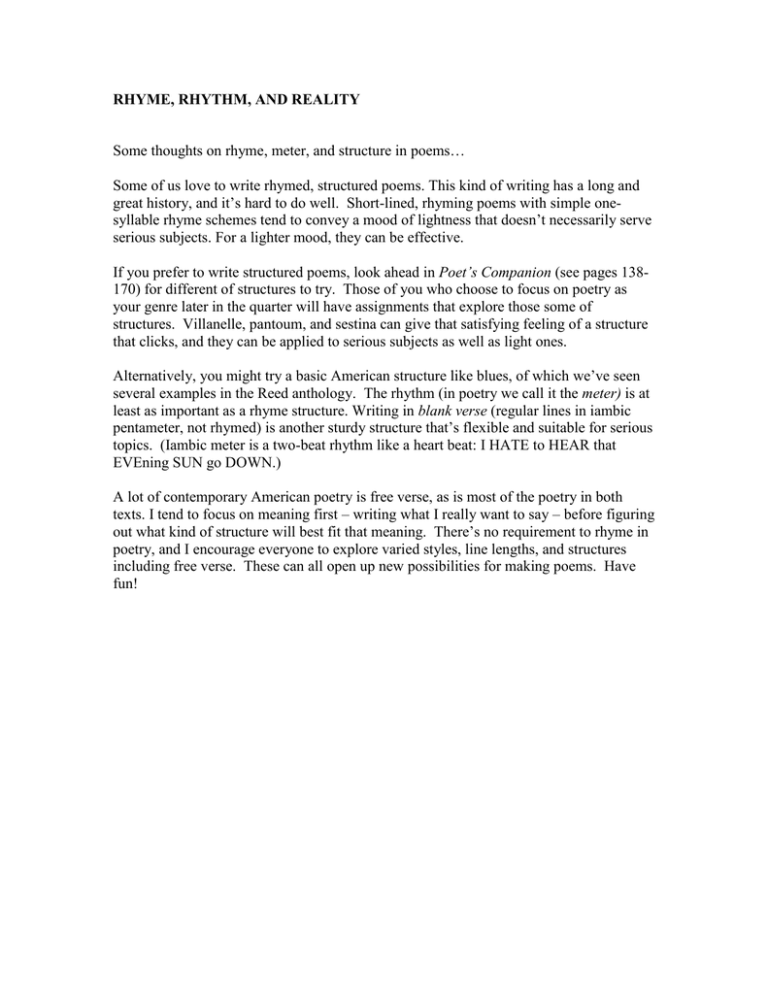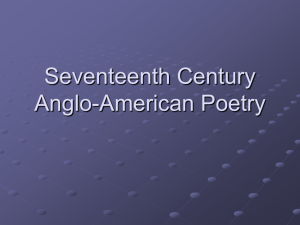RHYME, RHYTHM, AND REALITY
advertisement

RHYME, RHYTHM, AND REALITY Some thoughts on rhyme, meter, and structure in poems… Some of us love to write rhymed, structured poems. This kind of writing has a long and great history, and it’s hard to do well. Short-lined, rhyming poems with simple onesyllable rhyme schemes tend to convey a mood of lightness that doesn’t necessarily serve serious subjects. For a lighter mood, they can be effective. If you prefer to write structured poems, look ahead in Poet’s Companion (see pages 138170) for different of structures to try. Those of you who choose to focus on poetry as your genre later in the quarter will have assignments that explore those some of structures. Villanelle, pantoum, and sestina can give that satisfying feeling of a structure that clicks, and they can be applied to serious subjects as well as light ones. Alternatively, you might try a basic American structure like blues, of which we’ve seen several examples in the Reed anthology. The rhythm (in poetry we call it the meter) is at least as important as a rhyme structure. Writing in blank verse (regular lines in iambic pentameter, not rhymed) is another sturdy structure that’s flexible and suitable for serious topics. (Iambic meter is a two-beat rhythm like a heart beat: I HATE to HEAR that EVEning SUN go DOWN.) A lot of contemporary American poetry is free verse, as is most of the poetry in both texts. I tend to focus on meaning first – writing what I really want to say – before figuring out what kind of structure will best fit that meaning. There’s no requirement to rhyme in poetry, and I encourage everyone to explore varied styles, line lengths, and structures including free verse. These can all open up new possibilities for making poems. Have fun!


